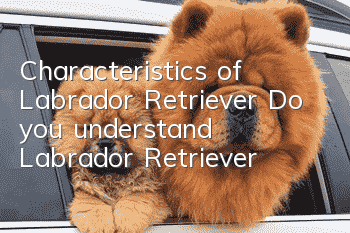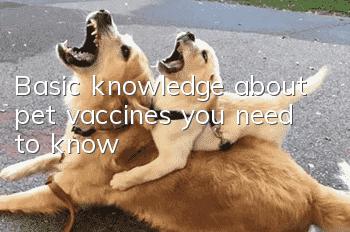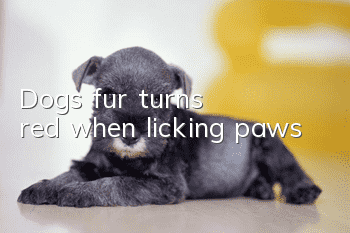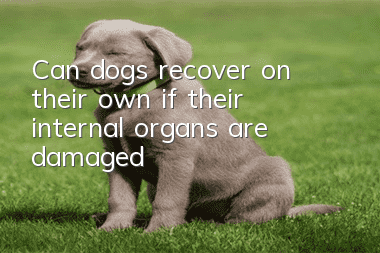Characteristics of Labrador Retriever Do you understand Labrador Retriever?

Labrador’s personality traits
Labrador’s temperament is comparable to that of a golden retriever, and it is definitely famous for its good temper. Before deciding to live with a Labrador, you need to understand its personality. If you live with a dog with a different personality, you will go crazy. Let’s take a look with the editor on how to test the personality of a Labrador dog.
Labrador is easy to train
To see the trainability of Labrador, take a toy or an old sock and drag it on the ground. You should be attracted to it and even want to chase it. In the end, the whole litter may come over and want to chase it. This is a good sign. A dog that is completely uninterested indicates that it will be difficult to train in the future.
Labrador is not very courageous
Test Labrador’s courage. Put your dog on a hard surface to play with. When he is paying close attention, you suddenly drop a stainless steel bowl or other loud object on the ground 1.5 meters away to see if the noise will scare him. The good thing is that the dog will look at the source of the sound or continue playing after being nudged. If the puppy shows fear and refuses to continue playing, it is allergic to the household pet.
Labrador has a stable personality and is not easy to attack people
Labrador rarely barks in life, almost rarely His barking could be heard. They are very friendly to the elderly, children and strangers, and their stable character will not let them pounce on the elderly or children at will. At home, a trained Labrador will also obey its owner's instructions and help deliver small items and so on.
Feeding characteristics of Labrador
In the early stages of feeding, give it a sufficient portion, but do not let it eat until the feeding time. Wash utensils every day and continue to provide them with enough clean water. When feeding smaller Labrador puppies or toy dogs, when the weaning period is reached, the food must be mixed with water to soften it before feeding. If you are feeding professional dry dog food or canned dog food, please follow the instructions on the product packaging.
Things to note when feeding a Labrador before ten months old
1. During the Labrador period, if you can occasionally feed an appropriate amount of raw meat or fish, it will help the dog development. However, the fish bones and fish bones must be broken into pieces.
2. If the Labrador eats human food, it will cause gastrointestinal disorders and cause indigestion. Therefore, it must be cooked into soft food
3. You cannot feed only meat without rice and vegetables.
4. Using biscuits with less sugar as snacks is also a way to supplement the meal.
5. Labradors after 3 weeks of age can be fed cow, goat milk, soup, etc. in addition to breast milk, but the soup should not contain too much fat, otherwise it will easily lead to diarrhea.
6. Little Labradors around one month old can be fed porridge-like food cooked with minced meat, rice, cornmeal, flour and vegetables in conjunction with breastfeeding.
Baby Labradors aged 7.35-45 days can be cooked into porridge with thick soup, and add appropriate amounts of whole grains, vegetables, fish and salt as their staple food. During this time, remove parasites from your dog.
8. Change the Labrador’s drinking water sooner or later.
9. After the puppy grows to 4 to 5 years old, its bones will gradually grow. Food cannot contain too much fat.
10. From 5 to 6 months old, young Labradors can be fed soft rice, and appropriate amounts of whole grains and vegetables with low fiber content can be added to supplement vitamins. This is a critical period for the growth and development of the little Labrador, and sufficient food nutrition must be provided.
12. When the little Labrador grows to 8 months old, the female dog begins to have physiological phenomena. Vaginal bleeding will last for 2 to 3 weeks. When the amount of bleeding decreases, the vagina will swell and enter the ovulation period, which will continue. About 5 days. Female dogs only mate during this period, and it is best to keep them in captivity or tethered to avoid getting close to male dogs. After 5 to 6 months, it is more appropriate to mate and give birth again during the second estrus.
13. Calcium supplementation is most effective for small Labradors, from 2 months to 6 months. Dosage and timing can be determined based on the development of your miniature Labrador retriever.
The living environment required by Labrador
① It must be timed, quantitative and in a fixed location. Timing can develop the dog's timing conditioned reflex. Generally, adult dogs are fed twice a day, once in the morning and once in the evening, and slightly more at night. Those under 1 year old should be fed 3 times a day; those under 3 months old, fed 4 times a day; puppies under 2 months old, fed 5 times a day. The food pattern can be renovated, but the quantity should be relatively stable. The feeding location can be inside or outside the kennel, but dogs are generally fed in the kennel. The purpose of a fixed location is to keep the environment relatively stable and easy to manage. Some dogs will refuse to eat and lose appetite when changing feeding places.
② Except in summer, warm feed should be fed. The temperature of the feed should be around 40°C, not too cold or too hot; cold food can be fed in summer, and the feed must be heated in winter, preferably At about 35°C, it is better not to be hot to the touch. Feed that is too hot will not only affect the dog's appetite, but also burn the dog's teeth; food that is too cold will easily ruin the stomach.
③Each Lara tableware should be fixed and should not be used indiscriminately. When feeding multiple dogs, be especially careful not to exchange the food bowls of each dog to prevent the spread of disease. Wash after feeding and boil and disinfect regularly. A dog’s life is very regular, so it’s best to let Lala have her meal in its proper place.
④ Pay attention to the eating situation when feeding. If there is leftover food or no food, find out the cause and take timely measures. The leftover feed should be taken away immediately and should not be left for a long time for the dog to eat at any time.
- How long does it take for a bear to grow back after shaving it?
- How many months did the Golden Retriever take to give birth? What should I pay attention to when the Golden Retriever is pregnant?
- Can dogs eat beans? You need to pay attention to how they eat them!
- Can 2-month-old puppies have rabies? Correctly understand rabies!
- Can tiny things be cured? Do you so distrust modern medicine?
- How long does a dog generally live? If you want your dog to live longer, you need to do these things!
- What is the chance of disease caused by a dog scratch? CCTV official teaches you how to judge
- What medicine should dogs take when they have a fever? Dog fevers need to be treated promptly to avoid developing canine distemper.
- Why are dogs picky eaters? Owners should change these three things
- What kind of dog bite can cause rabies? Stay away from this kind of dog!



